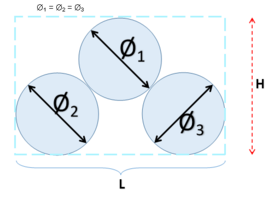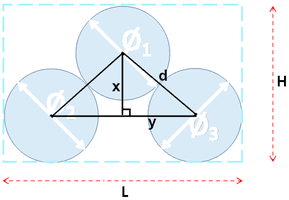Hi everyone, i believe we can have formulae for this simple 2D drawing for everyone who don't learn engineering subject like me.
Given known value for fixed length (L) and diameter (Ø), need to calculate the max height (H). Diameter all same size.

thanks geniuses!!!
it will be great help for me(and others) since i dont know to use any drawing applications/softwares
Given known value for fixed length (L) and diameter (Ø), need to calculate the max height (H). Diameter all same size.

thanks geniuses!!!
it will be great help for me(and others) since i dont know to use any drawing applications/softwares

